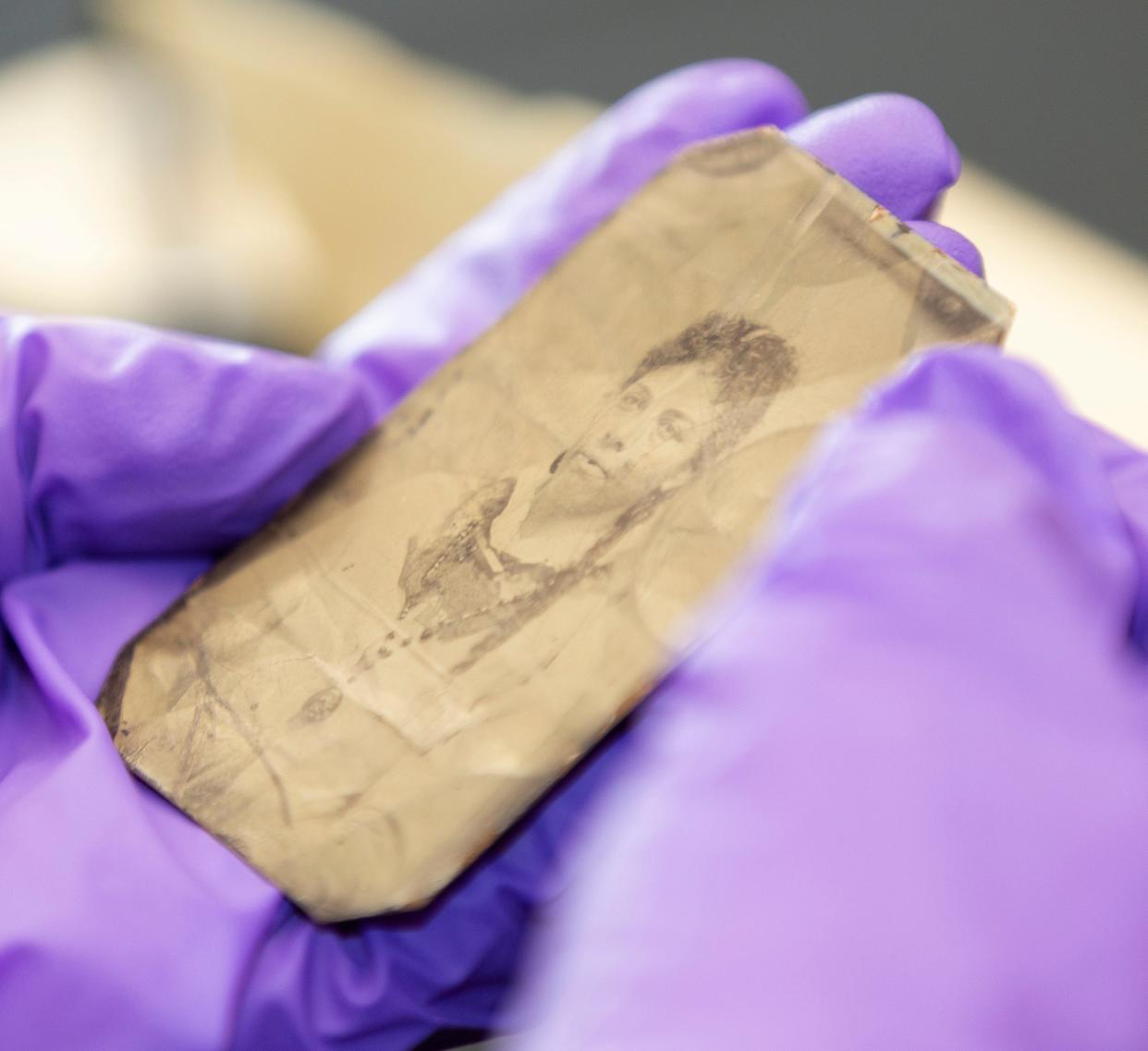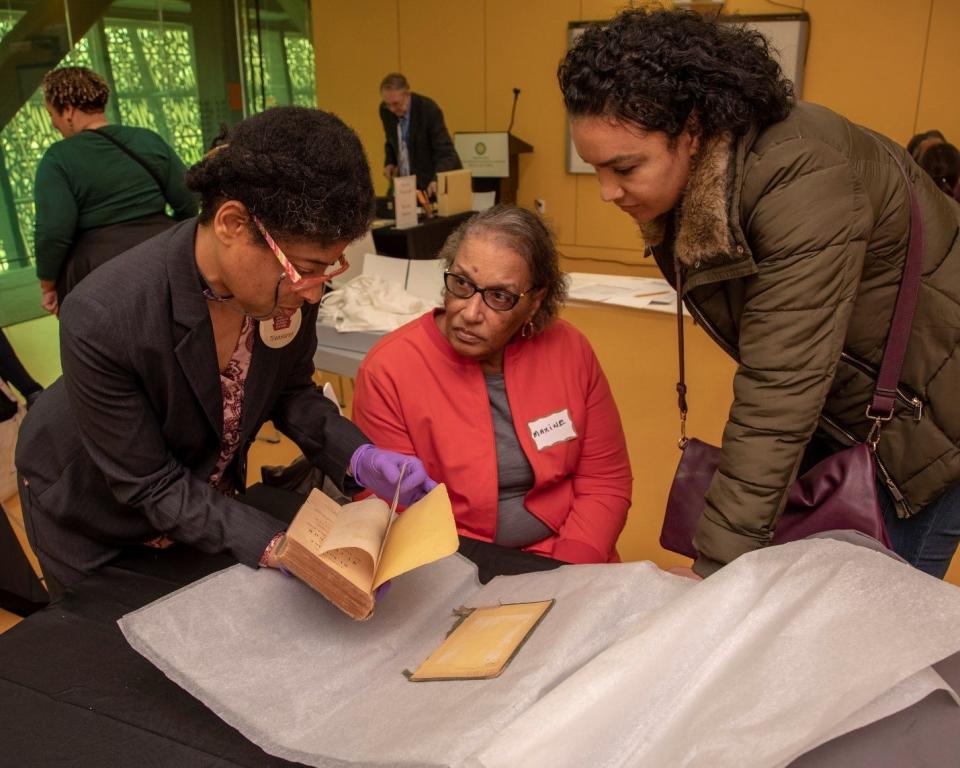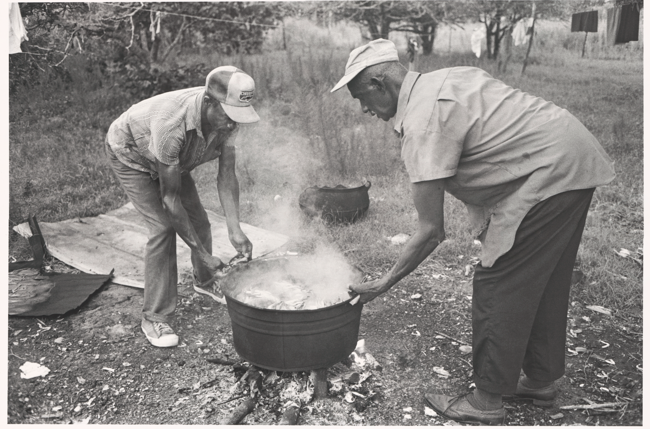Savannah African Art Museum, Smithsonian experts offer advice how to preserve heirlooms

If you have great-great Aunt Cornelia’s handmade quilt tucked away someplace in the attic, the Savannah African Art Museum has a special opportunity for you to learn more about caring for your family’s beloved treasures.
As part of the 35th annual Savannah Black Heritage Festival, the Smithsonian National Museum of African American History and Culture teams up with the Savannah African Art Museum in teaching the best ways to preserve special textiles, photographs and important documents.
The Smithsonian’s Hometown Treasures Community Expo takes place 11 a.m. to 3 p.m., Feb. 19, in Savannah State University’s Social Sciences Building, 3219 College St. The free event begins with a lunch-and-learn opportunity preceding heirloom preservation sessions. Lunch attendees must preregister.
Lisa Jackson, outreach and education coordinator with Savannah African Art Museum, first worked with the Treasures program in 2002. COVID was in its ebb and flow, such that when the Smithsonian reached out, they were interested in the local museum participating as an online contributor. This digital experience was an important means for the organization to share its resources nationally as well as meet more people along the Gullah Geechee corridor spanning the coast from North Carolina to northern Florida.
Jackson stayed in touch with Dr. Vanessa Moore, manager of the national museum’s traveling program. Then, late last year, when Moore contacted Jackson about once again including Savannah, she was thrilled.
“Excitement was an understatement,” emphasized Jackson. “When I found out Hometown Treasures was interested in coming to Savannah in person, it seemed like a great way for our community to look at their family treasures and learn about how to preserve them, so future generations can tell their stories.”

Learn how to preserve family keepsakes from Smithsonian experts
Typically, Hometown Treasures works like this: community members bring their keepsakes to a workshop where Smithsonian history experts have a look, then instruct how best to care for and preserve the items. For Savannah, the traveling historians will present sessions specifically focused on textiles, photographs and papers as well as provide preservation starter kits. Residents need not bring their keepsakes.
“Each attendee gets a kit with a plastic tote, a family treasures how-to publication, plus a sample of archival supplies like sleeves, folders, nitrile gloves and #2 pencils and a sharpener,” explained Moore. “Through this process people learn how to take notes about their treasures, why they are important and how to preserve and pass them on. Community and family history are just as important as national history.”
For Moore, visiting Savannah with her team is especially poignant as the occasion brings full circle the 2016 creation of the Smithsonian’s museum for African American history. Oldest known Daufuskie Island descendant, Isabel Hudson, who migrated to Savannah at the age of 13 and who celebrates her 101st birthday this April, plays a crucial role in the genesis of the national museum.

“Jeanne Moutoussamy-Ashe, the widow of tennis champion and Civil Rights activist Arthur Ashe, visited Daufuskie Island in the 1990s. There, Jeanne took photos of Isabel Hudson and her family,” said Moore. “Those photos plus $1 million were gifted some 20 years later to the Smithsonian and became funding seeds for the National Museum of African American History and Culture and our Hometown Treasures program.”
Moore also emphasizes how Isabel Hudson’s life story is an important example of why people should make notes about their keepsakes. When Hudson left Daufuskie, the only item she brought with her was a passed-down, busted up wooden chair—had her family not known its intergenerational significance, the broken seat likely would have been tossed out long ago. On February 20, one day after the Treasures workshop, the Jepson Center hosts a showing of “Digital Treasures: Daufuskie Island and Beyond!,” which features Hudson’s life and migration story.
The lunch-and-learn opportunity prior to the preservation sessions mostly focuses on undergraduate and graduate students, though anyone can attend, and all are welcome. The goal is to provide students with more information about museum careers, as people of color in this field remain significantly underrepresented. Lunch is provided, but students and interested community members must preregister online.
Additional local organizations, including the Savannah African Art Museum, Live Oak Public Libraries, Daufuskie Island Gullah Heritage Society and representatives from Kiah House Museum, will present information ranging from tracing one’s ancestry to textile art and historic preservation.
For Moore, who had an unconventional professional path to the Smithsonian, the chance to meet and exchange ideas with Savannah students is particularly inspiring.
“I’d been a high school guidance counselor and worked with students at different universities in North Carolina, but I never counseled on pursuing a museum career. Because I didn’t know,” reflected Moore. “I want young people to know the different career paths museums offer. My past experiences in education make it possible for me to be here now with Hometown Treasures, which is important because it educates people who might not be able to travel to the museum in Washington D.C. Our program teaches the importance of thinking beyond ourselves, for the future, to preserve community and family history, that through careful preservation, we have the power to keep our history alive.”
If you go >>
What: Savannah Black Heritage Festival & Savannah African Art Museum
When: Lunch-and-Learn at 11 a.m. to 1 p.m.; Hometown Treasures Expo at 1 to 3 p.m., Feb. 19.
Where: Savannah State University, Social Sciences Building, 3219 College St., Savannah
Cost: Free to attend; register online at nmaahc.si.edu/events/lunch-and-learn-exploring-museum-careers-0
and
What: “Digital Treasures: Daufuskie Island and Beyond!” presented by Savannah Black Heritage Festival & Savannah African Art Museum
When: 6 p.m., Feb. 20
Where: Jepson Center, 207 W. York St., Savannah
Cost: free to attend
What: “The Language of Fabrics,” Textile Traditions Across Africa
When: Exhibit runs through January 2025
Where: Savannah African Art Museum, 201 E. 37th St., Savannah
Check out the full listing of lectures, film screenings, art exhibits, workshops and more at the Savannah Black Heritage Festival’s website, savannahblackheritagefestival.org/schedule.
This article originally appeared on Savannah Morning News: Savannah Black Heritage Festival offers program to preserve family heirlooms

